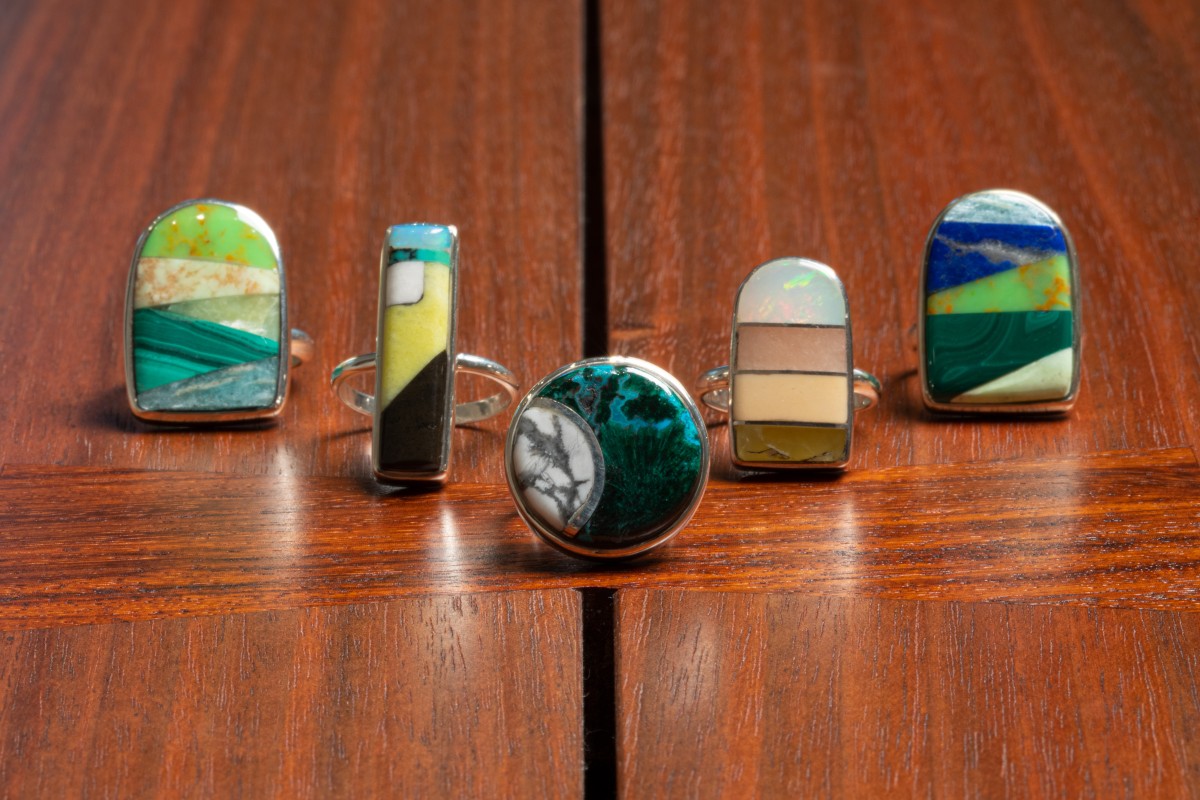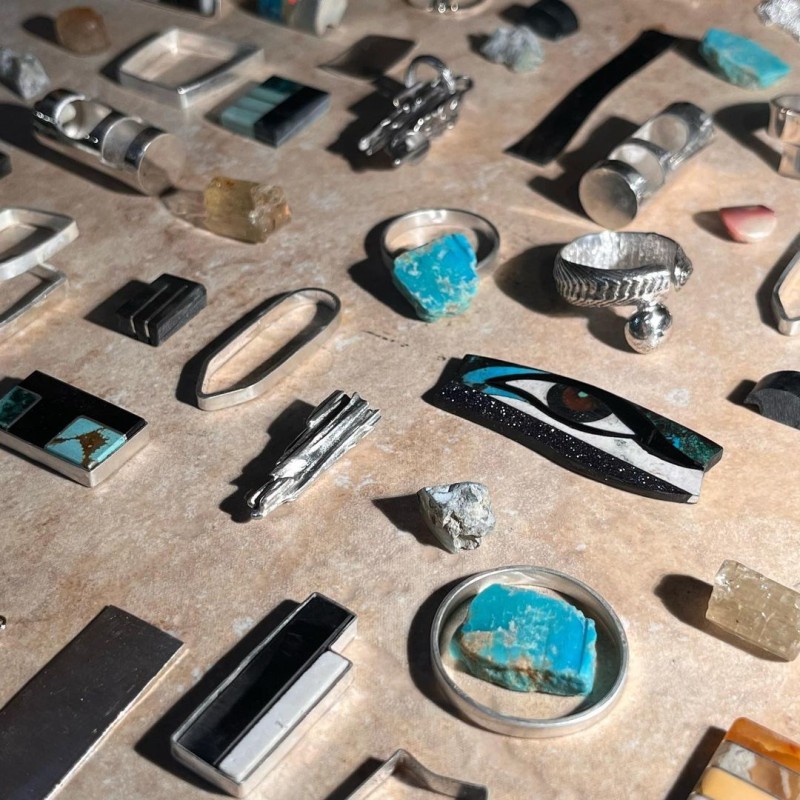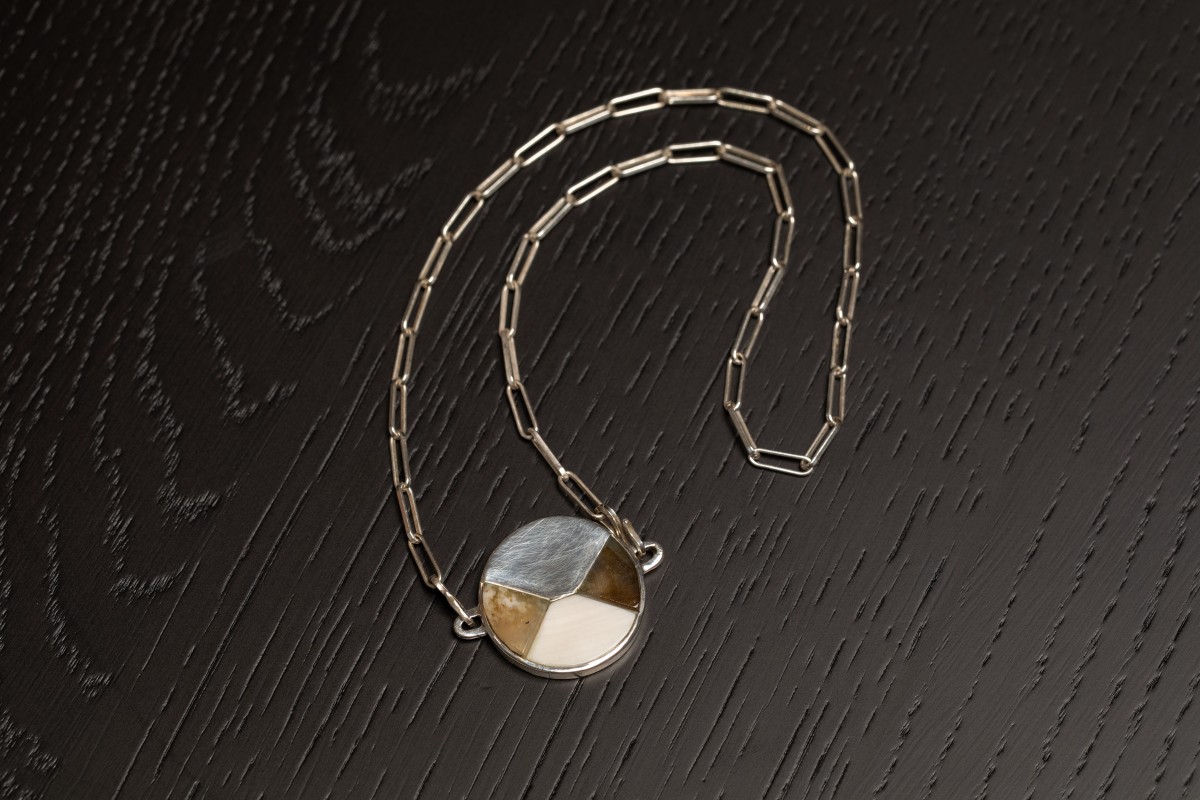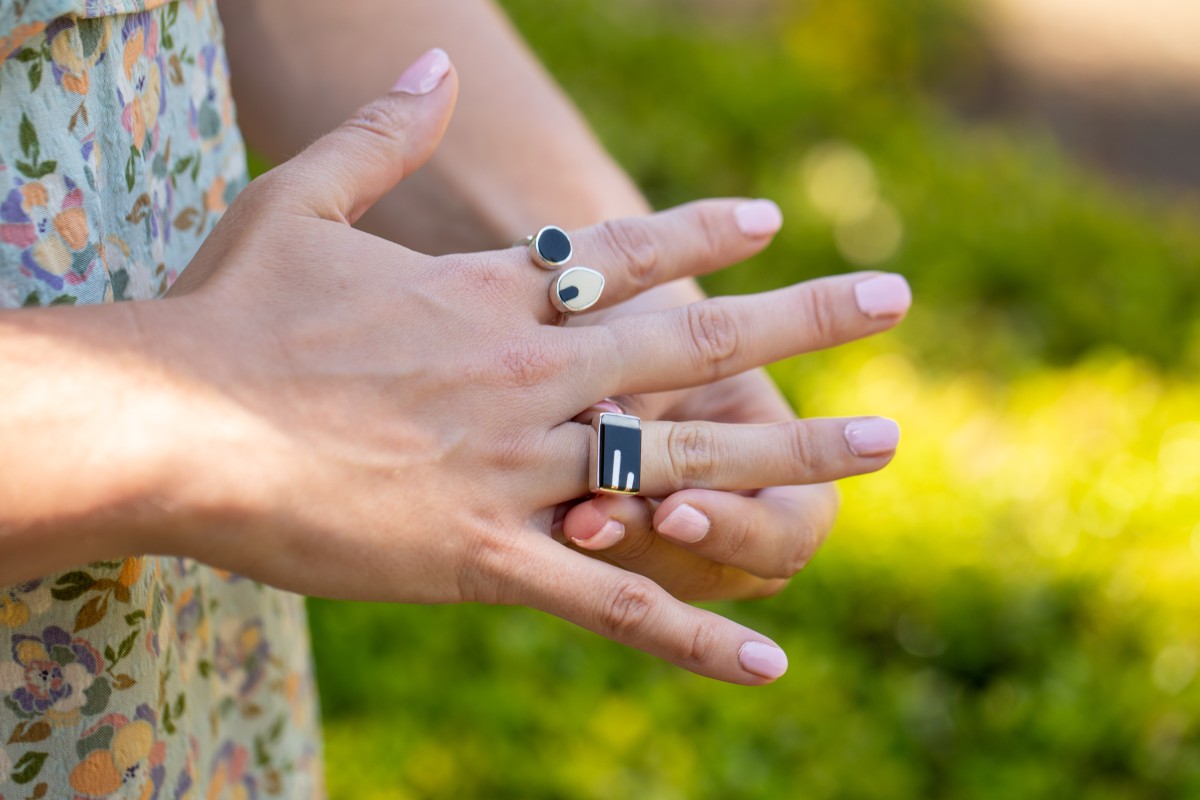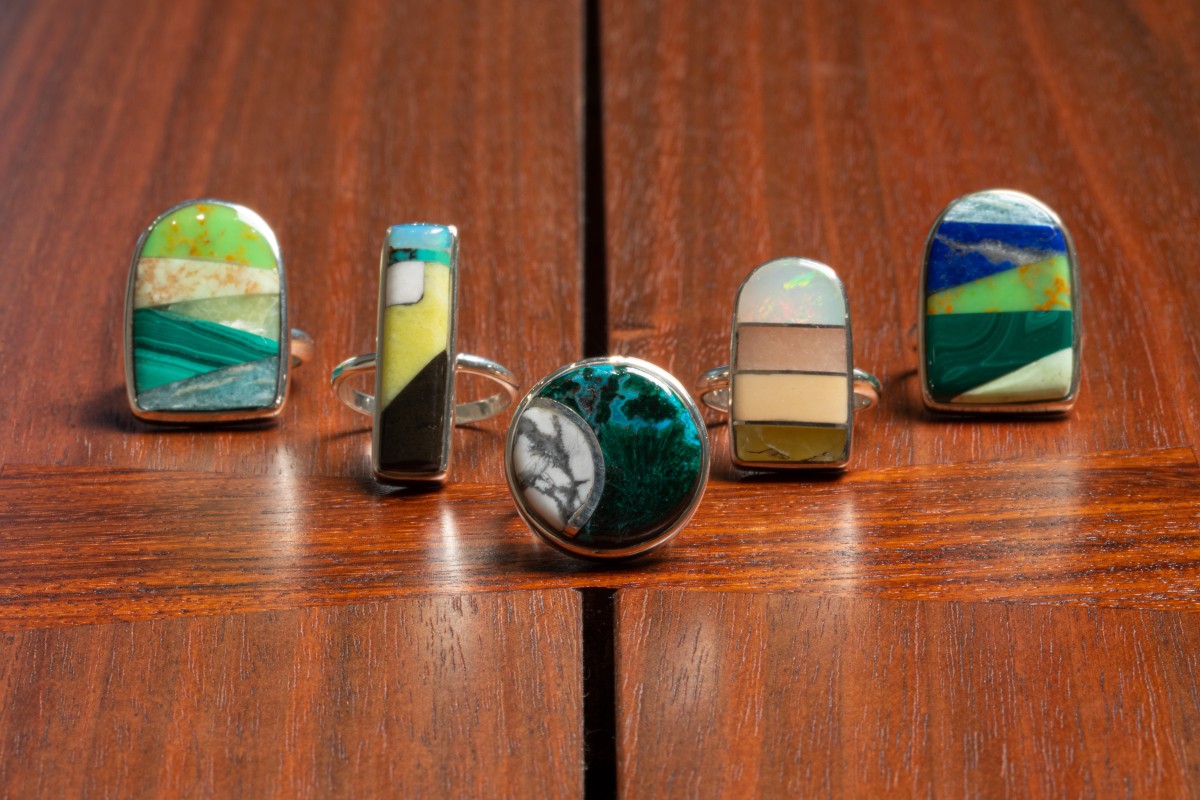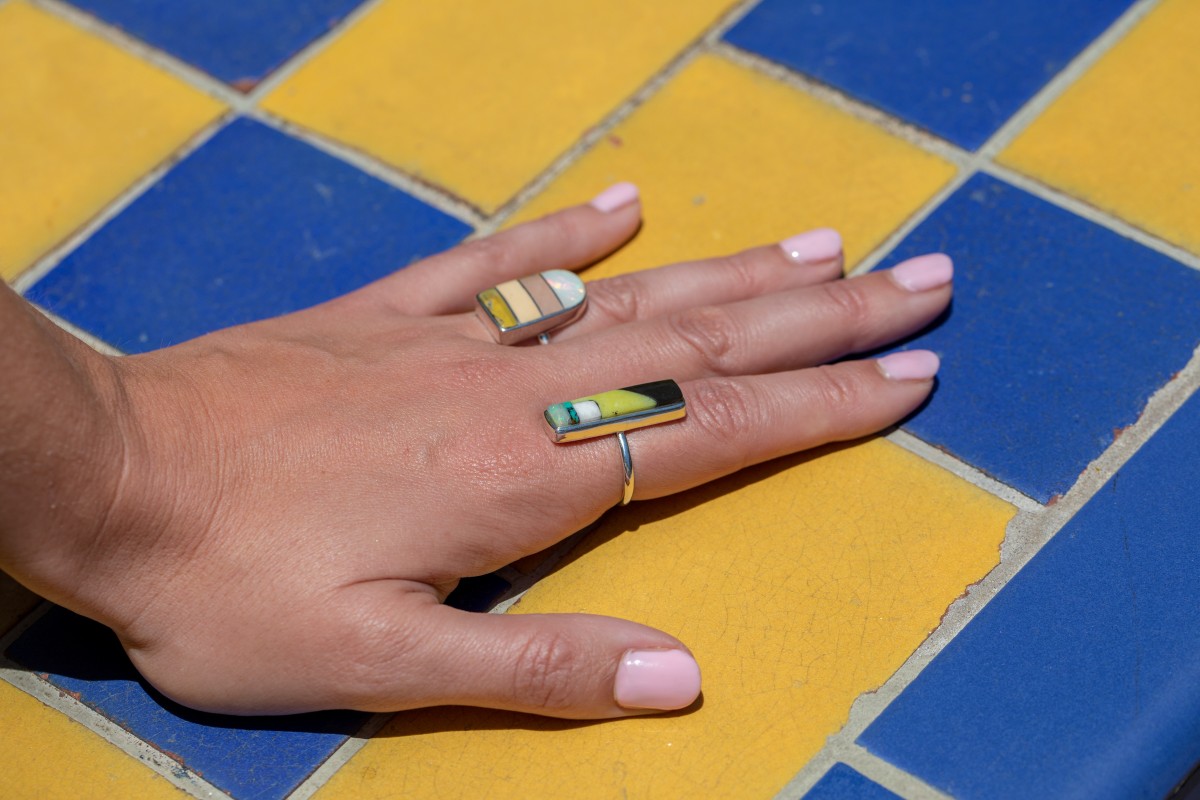Fati Genese truly does it all. From metalsmithing to marketing, Fati cuts and carves each inlay jewelry piece by hand from raw vintage stone and then photographs her work to share on social media. We’re thrilled to have her jewelry available at Shop Mingei and to be able to ask her a few questions about her work.
How did you get into jewelry making?
In high school, I took an elective jewelry-making class and loved it. I ended up taking it all four years in high school and continued my art education at the College of the Redwoods and Humboldt State University, where I learned metalsmithing and sculpture. I went into fashion for a little while but soon realized my passion was jewelry.
In 2011, I started my jewelry business, Sea Pony Couture. I apprenticed under a goldsmith in the Bay Area who helped me work with precious metals, high-end jewelry, and faceted stones. While working in a studio of about 70 artists, I was eager to find a way to stand out, and that’s when a friend tipped me off about an inlay class. From there, I went to Ghost Ranch in New Mexico and learned a ton about inlay, which I’ve been doing for about six years now.
What is inlay?
Generally speaking, inlay is the filling of space with a different material, bringing both surfaces down to one even plane, appearing as if the piece is one continuous material. You can see gold inlay in vintage furniture or mother of pearl in an electric guitar.
